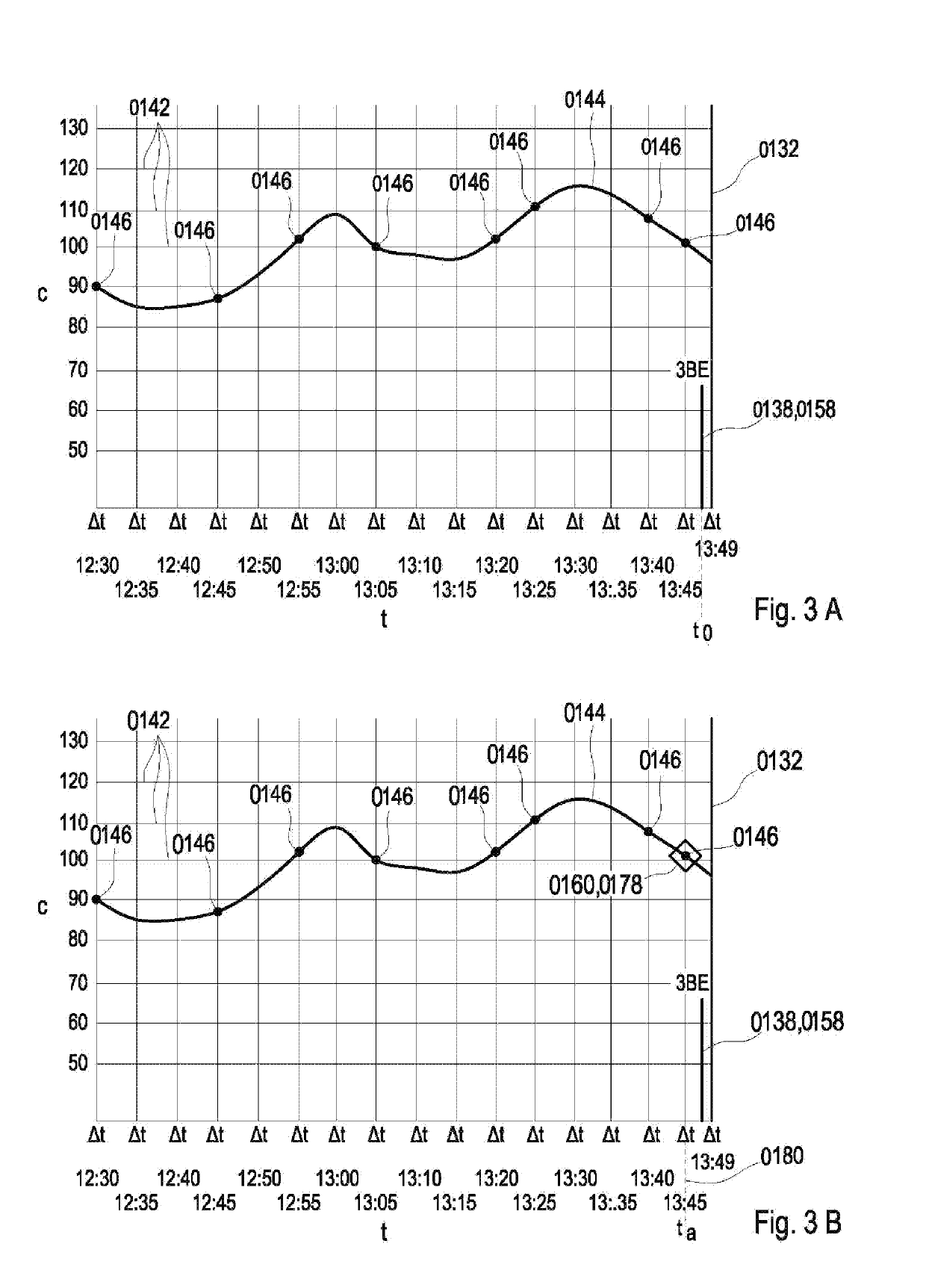Automatic recognition of known patterns in physiological measurement data
a physiological measurement and automatic recognition technology, applied in the field of automatic recognition of known patterns in physiological measurement data, can solve the problems of reducing the user-friendliness of the method and device, affecting the treatment of medical practitioners, and affecting the treatment effect, etc., and achieves the effect of easy implementation
- Summary
- Abstract
- Description
- Claims
- Application Information
AI Technical Summary
Benefits of technology
Problems solved by technology
Method used
Image
Examples
embodiments (
1)-(42)
Embodiment (1)
[0241]A patient monitoring system for a patient comprising:
[0242]a physiological data input device which acquires a plurality of physiological measurements of the patient within a time window thereby generating at least one time window data set;
[0243]a memory storing a pattern matching algorithm; and
[0244]a processor in communication with said input device to receive said generated at least one time window data set, and in communication with said memory in order to execute said pattern matching algorithm,
[0245]wherein said pattern matching algorithm when executed by said processor causes said processor to compress the at least one time window data set, store the compressed at least one time window data set, and perform a pattern match between a reference pattern and the stored at least one time window data set using a distance metric provided by the pattern matching algorithm.
Embodiment (2)
[0246]The system of embodiment (1), wherein the physiological data input ...
embodiment (
42)
[0300]The method of embodiment (41) further comprising automatically applying using the processor an orthogonal transform matrix to said subset of eigenvectors to provide a compressed reduced-rank vector.
[0301]Finally, particular realizations of the invention could be defined as follows: A patient monitoring system with an efficient pattern matching algorithm, a method, and a computer product thereof, in particular as disclosed herein. The system may include a physiological data input device or sensor which receives a plurality of physiological measurements within a time window thereby generating at least one time window data set, a memory which stores a program, and a processor. The program when executed by the processor, causes the processor to compress the at least one time window data set to a reduced-rank basis, and perform a pattern match between a reference pattern and the compressed at least one time window data set using a distance metric.
PUM
 Login to View More
Login to View More Abstract
Description
Claims
Application Information
 Login to View More
Login to View More - R&D
- Intellectual Property
- Life Sciences
- Materials
- Tech Scout
- Unparalleled Data Quality
- Higher Quality Content
- 60% Fewer Hallucinations
Browse by: Latest US Patents, China's latest patents, Technical Efficacy Thesaurus, Application Domain, Technology Topic, Popular Technical Reports.
© 2025 PatSnap. All rights reserved.Legal|Privacy policy|Modern Slavery Act Transparency Statement|Sitemap|About US| Contact US: help@patsnap.com



